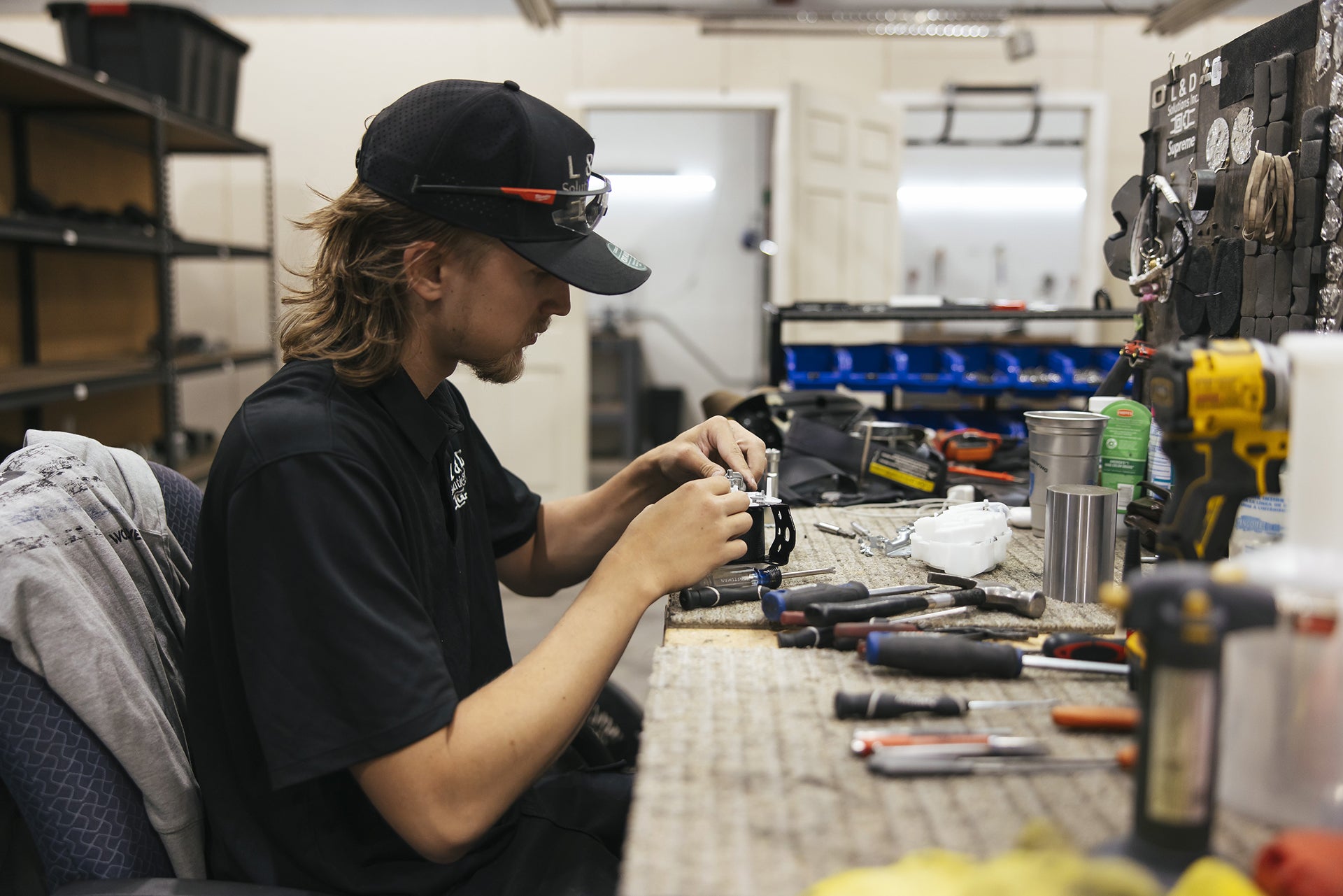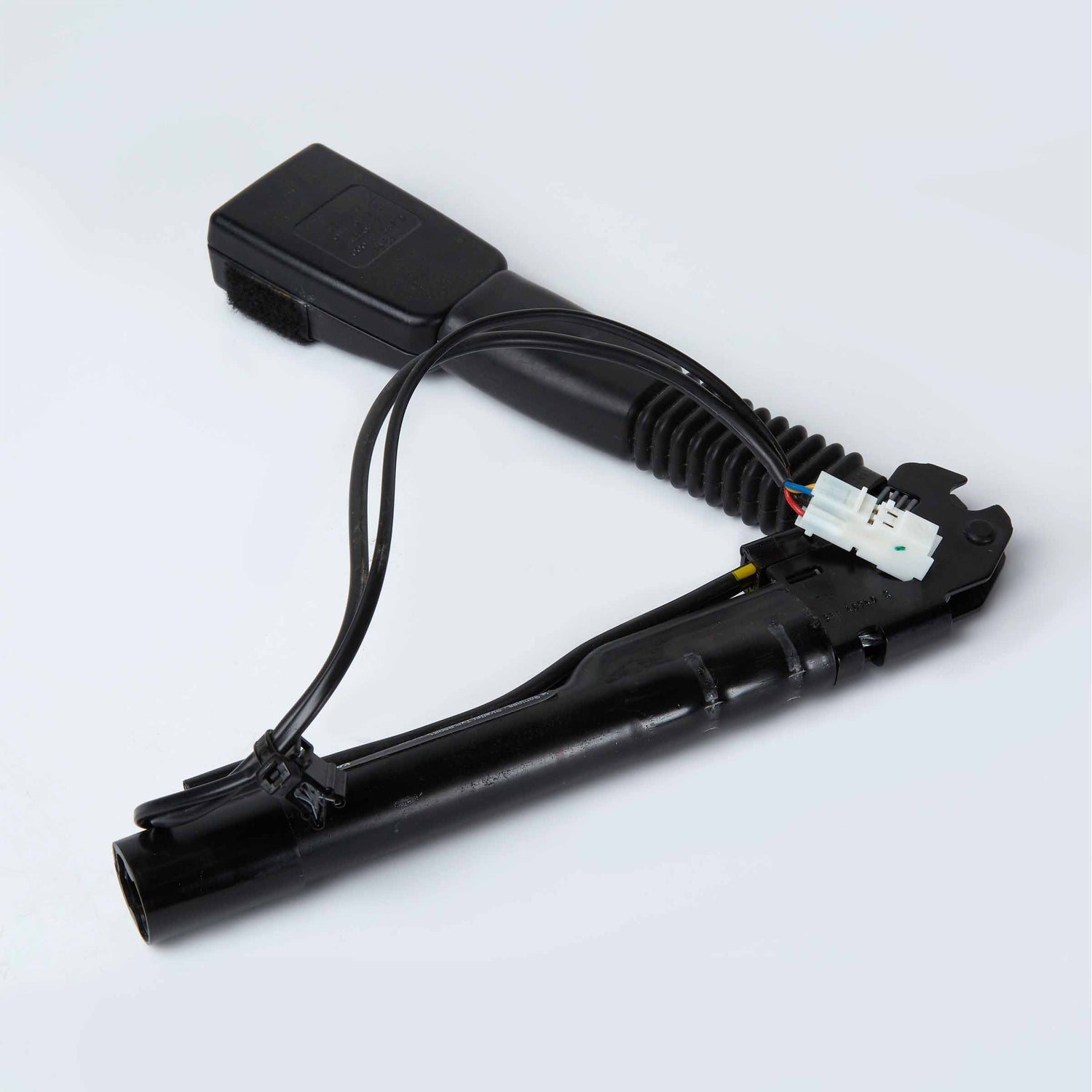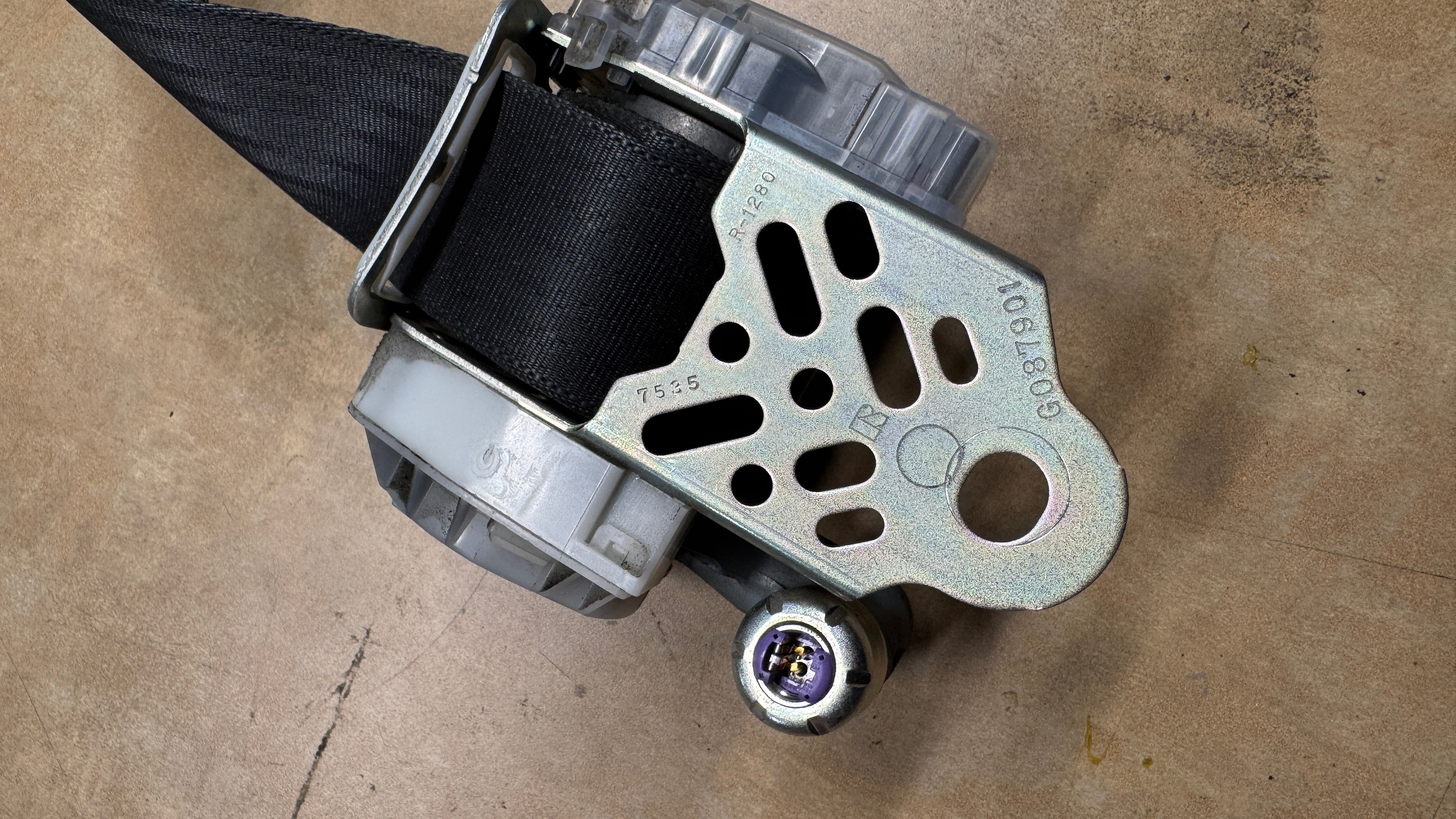Modern cars are designed so every safety component works as a team. The airbag can’t do its job alone, and neither can the seat belt. Here’s the thing: the Seat Belt Tensioner is the quiet teammate that makes airbags safer and more effective.
What a Seat Belt Tensioner Does?
In a split second crash, slack in the belt increases injury risk. A Seat Belt Tensioner removes that slack the instant sensors read a serious impact. Think of it like a quick tug that plants you deep in the seat before the airbag arrives. That tighter position reduces head and chest movement, helping the airbag cushion rather than collide with you.
There are two common types:
- Pyrotechnic units that use a small charge to yank the belt webbing tight.
- Mechanical or motor-driven units that reel in the belt when the control unit detects trouble.
Either way, a healthy restraint pretensioner is step one in a safe, controlled ride-down of crash forces.
How the Seat Belt Tensioner Works with Airbags
Let’s be honest: “talks” is shorthand. Communication happens through the SRS control module. When crash sensors cross a threshold, the module triggers both the Seat Belt Tensioner and the appropriate airbags, often in a tightly timed sequence. That timing matters. If the belt is snug first, the airbag can deploy with less force, because your body isn’t surging forward.
Real-world example: in a moderate frontal collision, the module might fire the Seat Belt Tensioner a few milliseconds before the driver airbag. That small head start can mean measurably lower chest loads and better outcomes in the same crash.
The Physics in Plain English
Airbags are volume. Belts are control. Without a firm hold from a Seat Belt Tensioner, an early airbag can meet you mid-flight. With that snap-tight belt, the bag meets you where it’s designed to, like catching a ball softly instead of swatting it at full speed. The result is less energy into your body.
Common Faults Involving the Seat Belt Tensioner
If your SRS light stays on, don’t ignore it. The module stores diagnostic trouble codes (DTCs) that can point to:
- Deployed or locked pretensioner
- Open circuit or high resistance in the pretensioner wiring
- Faulty buckle sensor or clock spring
- Low system voltage after a crash
Here’s a quick comparison to make sense of symptoms:
| Symptom | What you may notice | Likely cause | First step |
|---|---|---|---|
| SRS light on after fender-bender | Belts retract, but one side feels different | Pretensioner fired or partially locked | Scan for codes; check resistance at the connector |
| Belt won’t extend | Retractor locked solid | Pretensioner has deployed | Replace or professional rebuild of the retractor/pretensioner |
| Airbag light + seat belt chime weirdness | Intermittent warning | Harness or connector issue near the belt base | Inspect connectors under seat; verify continuity |
| Post-repair light won’t clear | Everything “looks fine” | Stored crash data in SRS module | Clear via proper tools, or reset/replace SRS module |
Repair or Replace the Seat Belt Tensioner?
Not every issue needs new parts. But some do. Let’s break down common paths:
- After an actual deployment: A Seat Belt Tensioner that has fired is a one-time device. Many automakers require replacement of the affected belt system and, in some cases, the airbag control module.
- Electrical fault only: If the DTC points to an open circuit, a qualified tech can verify wiring, connectors, and the pretensioner’s measured resistance. Sometimes the fix is as simple as a repaired connector.
- Crash data but no visible damage: Even without airbag deployment, the module may store events and disable the system. You’ll need a proper scan and, if required, a reset or replacement.
So how do you decide? Prioritize anything involving a pretensioner or SRS DTCs. That’s not a cosmetic issue; it’s core safety equipment.
Where Testing and Calibration Fit In
Modern vehicles rely on calibrated sensors and thresholds. If you replace a pretensioner, confirm:
- The correct part number and left/right position
- Connector integrity and routing
- Resistance within spec for the Seat Belt Tensioner
- No new DTCs after clearing
- Proper retraction and locking behavior in a pull test
A short road test with the scanner connected can confirm no intermittent faults return.
The Human Side: Why Sequence Matters
People ask, “Do airbags deploy if the belt fails?” It depends. Systems are designed to account for belt use. Many vehicles use dual-stage airbags or seat-position strategies. The module decides deployment force based on inputs like buckle status and, yes, the pretensioner circuit. If that circuit is faulted, the logic can change. Sometimes it will inhibit certain deployments or set the light so you get it fixed before the worst-case moment.
Everyday Habits That Protect the System
You can’t control a crash, but you can avoid preventable failures:
- Keep heavy items from smashing connectors under front seats.
- Don’t steam-clean or soak belt retractors; moisture corrodes pretensioner wiring.
- Pull belts out and let them retract smoothly, snapping can fatigue components over time.
- If your SRS light appears after a detail or seat removal, have the pretensioner wiring checked immediately.
After a Collision: A Smart Checklist
Even a “minor” hit can set off hidden faults. Work through this list:
- Scan first. Read and record every SRS code, including freeze-frame data.
- Inspect belts. Look for frayed webbing, slow retraction, or a locked retractor that signals a fired Seat Belt Tensioner.
- Confirm modules. Determine if the SRS control module needs reset or replacement per manufacturer guidance.
- Replace what’s required. Belts, tensioners, and airbags are engineered as a system. Cutting corners invites risk.
- Calibrate where applicable. Some vehicles need occupant detection or steering angle procedures after repairs.
Cost and Risk: Straight Talk
A replacement belt assembly with a pretensioner isn’t cheap. But compare that to ribs and a sternum meeting a hard steering wheel, or an airbag striking you at the wrong moment. The math is simple. A verified, working restraint system is one of the highest ROI “repairs” you’ll ever authorize.
Quick Myths, Quick Answers
- “The airbag will save me even if the belt fails.” Not reliably. Without a firm hold from a pretensioner, you can meet the airbag too early and too fast.
- “If the light clears itself, I’m fine.” Intermittent faults are still faults. Vibration can bring them back at the worst time.
- “Used parts are always fine.” Maybe. But if a used belt assembly’s pretensioner has already fired, or its resistance is out of spec, you’ve bought a paperweight.
When to Call a Specialist
If you don’t have factory-grade scan tools and specs, bring in help. A shop experienced with seat belt systems can test the pretensioners, confirm wiring, and advise on module resets. They’ll also verify that every replacement pretensioner matches your VIN and safety build.
The Takeaway
Belts and bags aren’t rivals. They’re a synchronized pair. The Seat Belt Tensioner sets the stage; the airbag delivers the cushion. Keep both healthy, and they’ll work together in the split second you need them most.
Need help? If your SRS light is on, or a belt won’t retract after a collision, L&D Solutions can help. We can diagnose, repair, or replace the Seat Belt Tensioner and confirm your airbags are ready if you ever need them.




Leave a comment
This site is protected by hCaptcha and the hCaptcha Privacy Policy and Terms of Service apply.